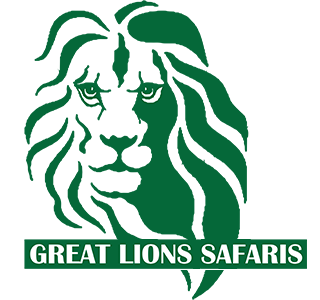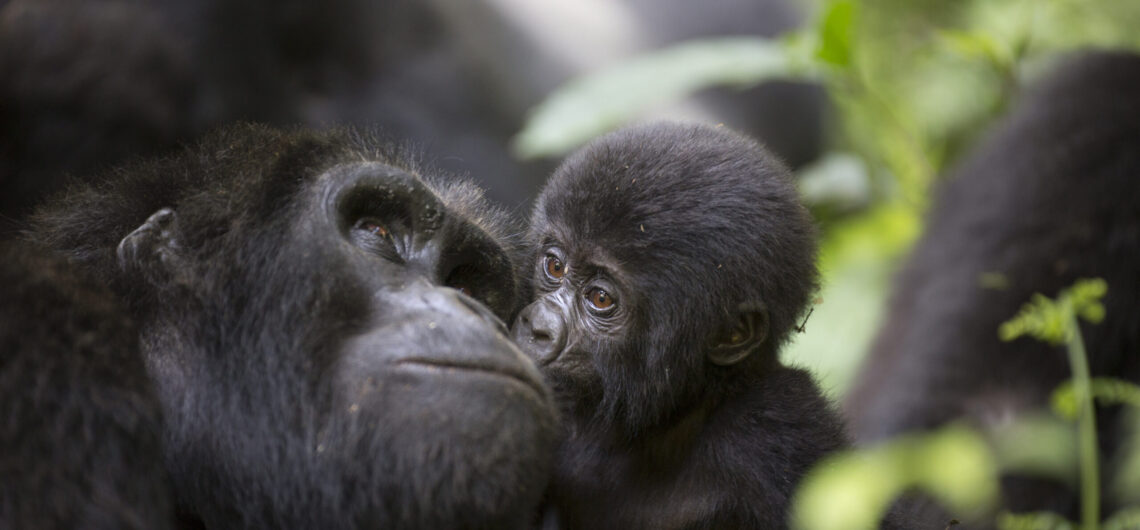Experiencing gorilla trekking in Uganda is like no other wildlife adventure. You get to see the endangered mountain gorillas in their own environment. This beginner’s guide will provide you all the information you need for your first gorilla trip, including how to prepare, what to bring, and what to anticipate while you’re there.
Over half of the world’s mountain gorillas call Uganda home, making it a prime location for seeing these majestic animals in their natural habitat. There are two national parks where gorilla trekking is most often done.
Trekking is possible among the 20 habituated gorilla groups that call Bwindi Impenetrable National Park, a UNESCO World Heritage Site well-known for its thick jungle.
The Virunga Conservation Area includes Mgahinga Gorilla National Park, which is smaller and less popular than the others. Mgahinga is located in the Democratic Republic of the Congo, Rwanda, and Uganda, and it provides a more personal trekking experience.
The best time to go gorilla trekking in Uganda
Although gorilla trekking in Uganda is possible at any time of year, the dry seasons are ideal.
June–September and December–February are the dry seasons. The woodland pathways are less muddy in these months, so it’s simpler to go about.
March–May and October–November are the rainiest months. The forest is verdant and the view is stunning, however walking might be more difficult than expected owing to icy paths. Also, during these months, there is usually a greater availability of permits.
Uganda gorilla trekking plus the permits
Not one may go gorilla trekking without first obtaining a gorilla trekking permit. Gorilla trekking Permits costs $800 per person per trek. Park admission, guided tours, and an hour with the gorillas are all part of the permit price.
It is vital to reserve early since permits are restricted and often sell out months in advance, particularly during the high season. You may get a permit from a licensed tour operator or the Uganda Wildlife Authority.
Park rangers will give you a safety lecture, gorilla behavior lesson, and trekking protocol at the park headquarters before your adventure starts. Assigning groups is done according to preferences and fitness levels.
Gorilla trekking durations range from one to seven hours, depending upon the whereabouts of the gorilla family. As you go, you may encounter thick underbrush, challenging terrain, and even muddy trails. If you need assistance moving heavy items or just plain old carrying them, porters are at your service.
When you see the gorillas, you’ll have a magnificent hour to watch them in all their glory. Take note of how they connect with one another, play, and eat as a family. Enjoy yourself without frightening the animals by maintaining a safe distance and without moving too quickly.
How to get to the gorilla trekking destination
Kampala or Entebbe are the usual jumping off points for gorilla trekking expeditions. Presenting the primary choices.
Traveling by car from either Kampala or Entebbe to Bwindi Impenetrable National Park takes about 8 to 10 hours and passes through beautiful rural Uganda. Scenic safaris with stops at landmarks like the Equator are available from a number of travel companies.
Faster still is taking a local flight from either Entebbe International Airport or Kajjansi Airfield to one of the nearby airstrips, Kisoro or Kihihi, which is close to Bwindi. You can reach the starting points of the hiking trails after a short drive.
Uganda gorilla trekking packing list.
Strong Hiking Boots: If you’re going to be hiking in muddy or otherwise unpaved areas, you need waterproof boots that have excellent grip.
Comfortable Clothes: To protect yourself from scratches, bug bites, and unexpected weather, wear long-sleeved shirts, slacks, and a lightweight waterproof jacket.
Wearing gardening gloves can prevent your hands from being cut when you hold onto branches.
To keep dry in inclement weather, pack a lightweight raincoat and waterproof leggings.
Protect your eyes from the sun and rain with a hat and sunglasses on days when the weather is nice.
To keep mosquitoes and other insects at bay, use an insect repellent.
Take pictures of the incredible moments, but don’t use a flash since it’s against the rules.
Nuts, energy bars, or other high-energy foods, as well as two liters of water, are good to have on hand.
Preparation for Uganda gorilla trekking safaris.
Trekking with gorillas demands a fair amount of physical condition because to the difficult terrain. Get in the habit of walking, hiking, or stair climbing on a regular basis in the months before your vacation to increase your stamina. Your enjoyment of the encounter will be directly proportional to your level of preparation.
Before you go to Uganda, find out whether you need to get any shots. Vaccines against typhoid, yellow fever, and hepatitis are often recommended. It is also recommended to take medicine to avoid malaria.
Be mindful of wildlife: Pay close attention to what your guides and rangers say at all times. Gorillas may mistake your close proximity to them for aggression, therefore it’s best to keep your distance (at least 7 meters) and not make eye contact.
Height Sensitivity: Due to its high elevation, Bwindi may have an impact on hikers. Listen to your body, drink plenty of water, and go at a leisurely pace.
Going on a gorilla trekking adventure is about more than simply viewing the primates; it’s about seeing the Ugandan rainforests in all their biodiverse glory.
Relax and take in the tranquility of the forest as you observe its sights and noises. Every step of the hike is a chance to commune with nature, whether it’s by seeing exotic birds, listening to the faraway chimpanzee cry, or just taking it easy in the forest.

